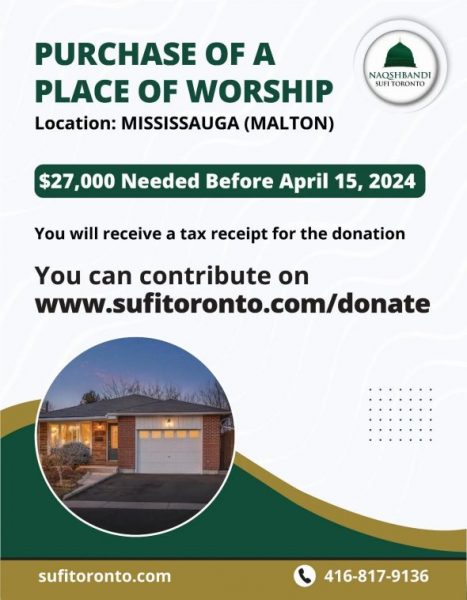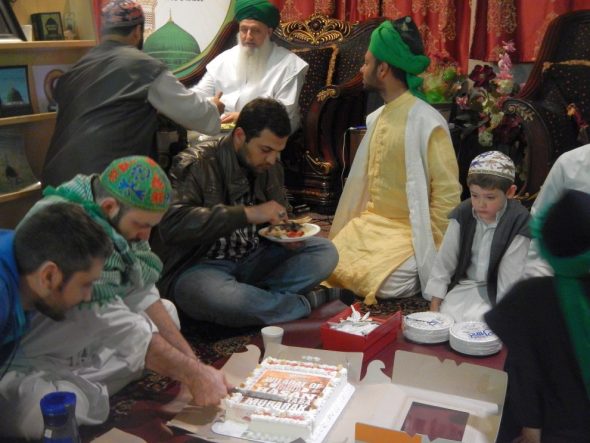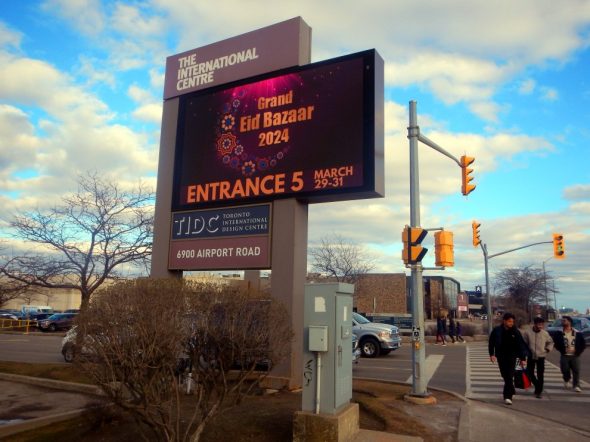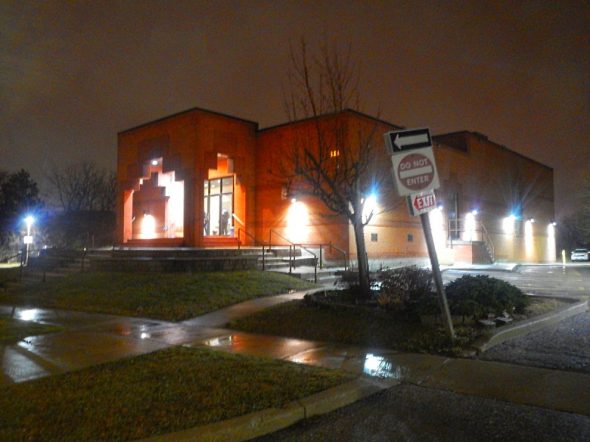
Comments Off on Night 23 – Brampton Jamatkhana – 525 North Park Drive – Brampton, Ontario
Category:
Tagged with:
Share it:
Comments Off on Day 21 – Layla Tul Qadr – Ismaili Muslim community for Southwest Ontario
“Laylat al-Qadr is an Arabic term meaning ‘the Night of Power’.
It commemorates the night when Prophet Muhammad (peace be upon him and his family) received the first revelation of the Holy Qur’an from Allah.
Muslims observe Laylat al-Qadr on various nights during the last 10 days of Ramadan.
Shia Ismaili Muslims observe it on the 23rd night, based on a saying of Hazrat Ali.
It is a night of special prayer and remembrance of Allah.
We wish you a night filled with prayers for peace, good health, happiness, and spiritual enlightenment.
Laylat al-Qadr Mubarak!”
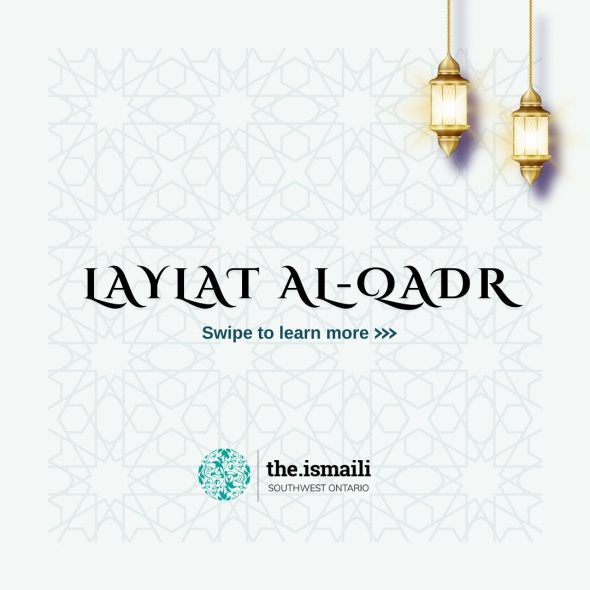
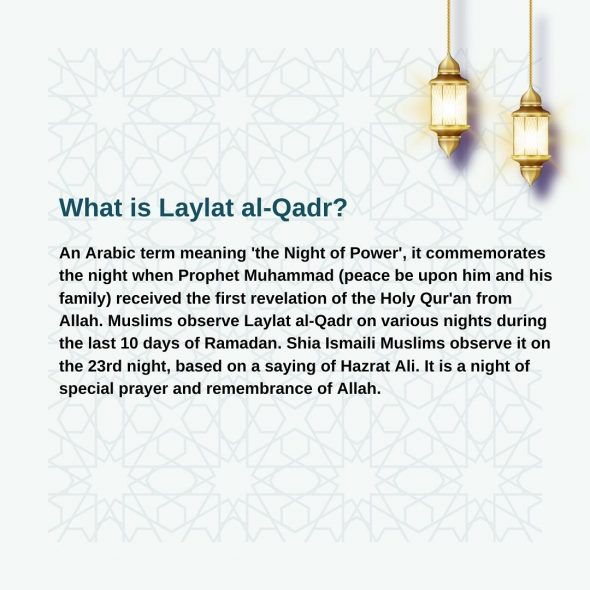
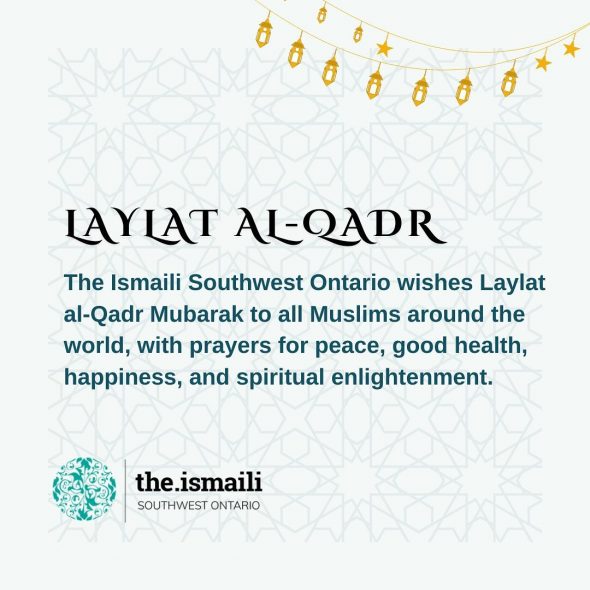
Category:
Share it:
Comments Off on Night 21 – Layla Tul Qadr – VIDEO – Public Adhan Al Maghrib – Isha – Taraweeh – Bramalea Islamic Cultural Centre – BICC – 25 Kings Cross Road, Brampton
Public Adhan Al Maghrib – The Public Call to Prayer after Sunset,
7:46 p.m. on Sunday March 31 2024…
Bramalea Islamic Cultural Centre – BICC – Brampton, Ontario
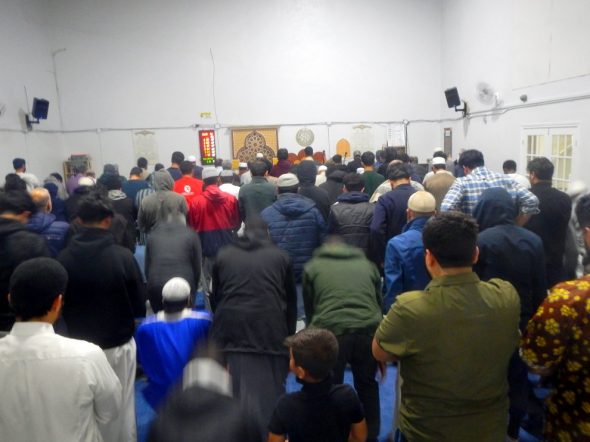
Salat Al Isha, The Night Prayer
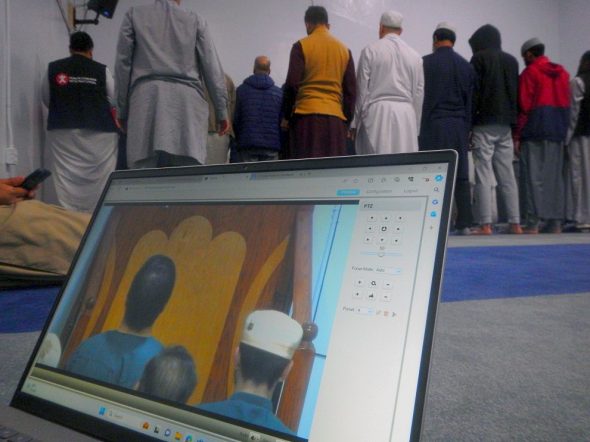
Salat Al Taraweeh
Bayaan by Shaikh Omar Subedar after Taraweeh about the recitation covered during the 21th night of Ramadan.
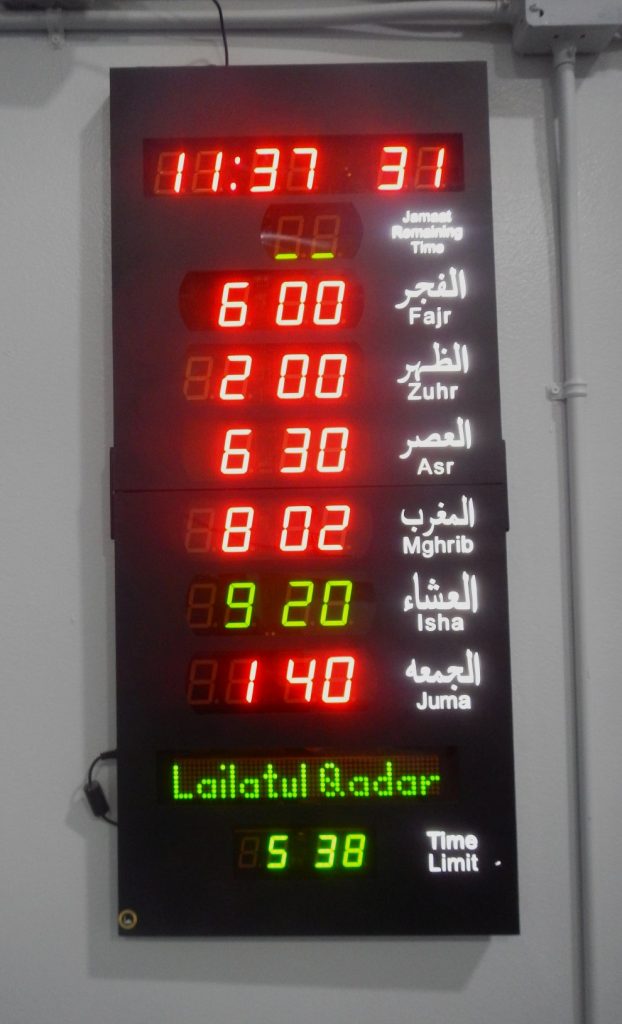
Category:
Tagged with:
Share it:
Comments Off on Day 20 – CLOSED – Naqshbandi Sufi Toronto – 129 East Drive, Unit A – Brampton, Ontario
Is there a Sufi Centre in Brampton?
I wasn’t sure about this one.
The “Naqshbandi Sufi Toronto” website still lists their address as 129 East Drive, Unit A, in Brampton.
I screen-grabbed this image from Streetview captured in August of 2021:
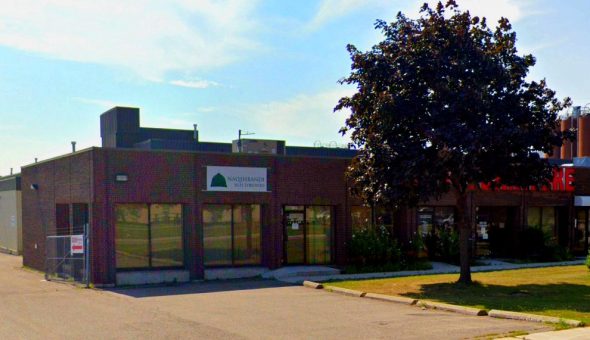
Because content on their website seemed to be last updated in August of 2019, I was not confident Sunday gatherings were still taking place on East Drive.
“Welcome to the official site of the Toronto chapter of the Most Distinguished Naqshbandi Sufi Order of America.
This site includes teachings, practices and events of the Most Distinguished Naqshbandi Sufi Order which is led by Qutub Mutassarif, Sultan al Awliya Mawlana Shaykh Hisham Kabbani, Leader of the Most Distinguished Naqshbandi Sufi Order.
The Toronto chapter has weekly spiritual gatherings.
The current time and place of our weekly meditation is:
Naqshbandi Sufi Toronto
129 East Drive, Unit A, Brampton, ON.
Sundays at 4:30 PM“
I decided to visit the address in-between Dhuhr and Asr time to confirm.
It just happened that new occupants were walking out the door of Unit A as I arrived.
Asking them about Naqshbandi Sufis drew a confused gaze as they didn’t recognize who I was talking about, but they did tell me that TODAY was the day they were taking possession of this business address.
Okay, confirmed, no Sufi Centre here.
So where did they go?
( Aside: The new occupants’ car parked out front had a customized vanity license plate displaying three numbers: “785”. NOT 7-8-6, but 7-8-5. )
On the “Naqshbandi Sufi Centers Across the World” map found on the SufiLive website, there was a single answer:
Zooming in to Toronto, Canada then clicking on the map marker brings up this sidebar info:
“Toronto
Zikr and Mawlid each Sunday starting at 7 pm
Rotating address on mureeds’ homes (mainly in Mississauga)”
So that’s it then, Naqshbandis in Brampton have become nomadic for the time being.
I did find a residential address where Sunday gatherings appear to happen in Brampton, but that’s someone’s home, not a Masjid nor Musallah nor public Islamic Centre.
Looking again at their website, I notice something obvious I didn’t see before:
Fundraising for a Place of Worship in Malton, which is just over the Mississauga/Brampton border, within walking distance of East Drive.
Okay, so SubhanAllah, not this Ramadan 2024,
but InshAllah we can visit the Naqshbandi Toronto Sufis next Ramadan 2025.
On Day 14 of Ramadan 2017,
I broke my fast with the Vancouver Naqshbandis on East Hastings.
There was cake…
Category:
Share it:
Comments Off on Day 20 – VIDEO – Ramadan Q&A Session – Shaikh Omar Subedar – “Wealth Purification Zakah” – Part 1 of 2 – Bramalea Islamic Cultural Centre – BICC – 25 Kings Cross Road, Brampton
Ramadan QA Session: Zakah
Category:
Tagged with:
Share it:
Comments Off on Day 19 – Iftar – Maghrib – Isha – Taraweeh – Brampton Sunnatul Islamic Association – Brampton Islamic Centre – BSIA/BIC – 6 Lowry Drive, Brampton
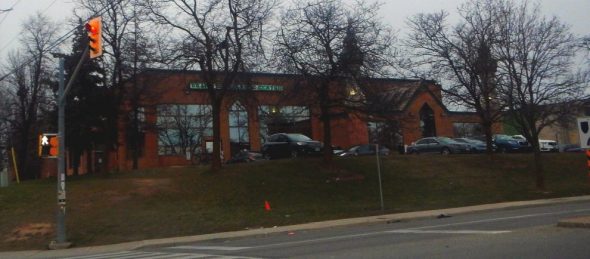
Category:
Tagged with:
Share it:
Comments Off on Night 19 – Isha – Taraweeh – Brampton Makki Masjid – Islamic Society of Peel – 8450 Torbram Road – Brampton, Ontario
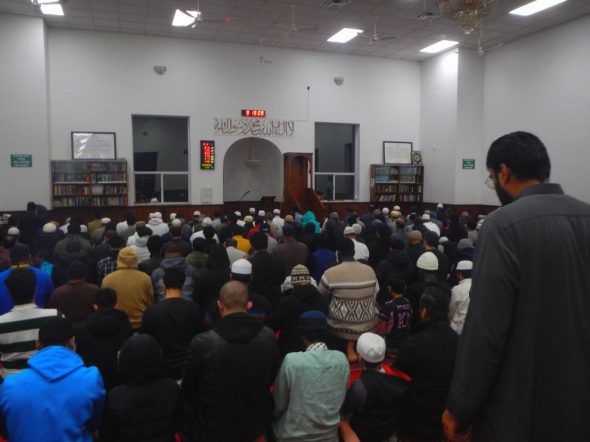
Category:
Tagged with:
Share it:
Comments Off on Day 18 – LIVESTREAM – The Resilient Hour – “The Greatest Blessing after Life” – Shaikh Abdool Hamid – Brother Mamoun S. Hassan – IIT – Islamic Institute of Toronto
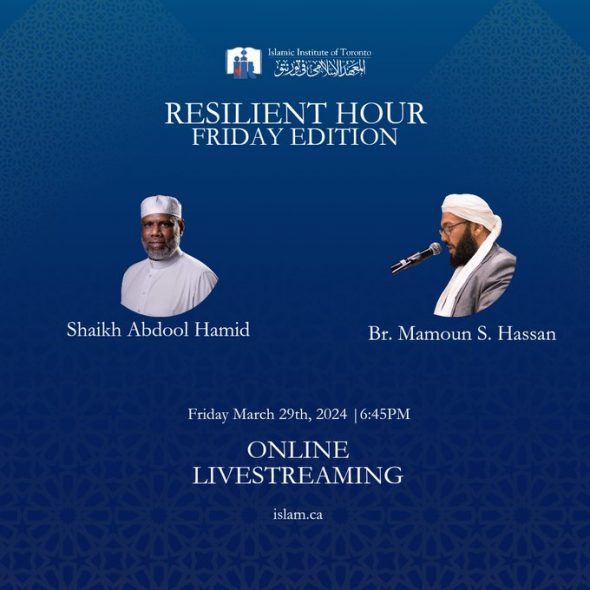
“The Greatest Blessing after Life
Join us online today with Sheikh Abdool Hamid and Br. Mamoun Hassan as we embark on the last 10 nights of Ramadan and discuss how we can reap the most benefit for this life and the next on our special online-only program starting at 6:45PM EST”
Join us online today with Sheikh Abdool Hamid and Br. Mamoun Hassan as we embark on the last 10 nights of Ramadan and discuss how we can reap the most benefit for this life and the next on our special online-only program starting at 6:45PM EST streaming on all platforms. pic.twitter.com/4H5TEGbQTv
— IIT (@IIT1630) March 29, 2024
The Greatest Blessing after Life | Resilient Hour: Friday Edition Sh. Abdool Hamid https://t.co/hrLtBKD5ww
— IIT (@IIT1630) March 29, 2024
Category:
Tagged with:
Share it:
Comments Off on Day 18 – Asr – Iftar? – Maghrib – Grand Eid Bazaar 2024: Iftar to Sahoor – Hall 5 – The International Centre | 6900 Airport Road, Mississauga
Category:
Tagged with:
Share it:
Comments Off on Day 18 – VIDEO – JUMAH – Third Friday – Brampton Sunnatul Islamic Association – Brampton Islamic Center – BSIA/BIC – 6 Lowry Drive, Brampton
Brampton Sunnatul Islamic Association aka Brampton Islamic Centre
Category:
Tagged with:
Share it:
Comments Off on Night 17 – Isha – Taraweeh – Al Huda Institute Canada – 5671 McAdam Road – Mississauga
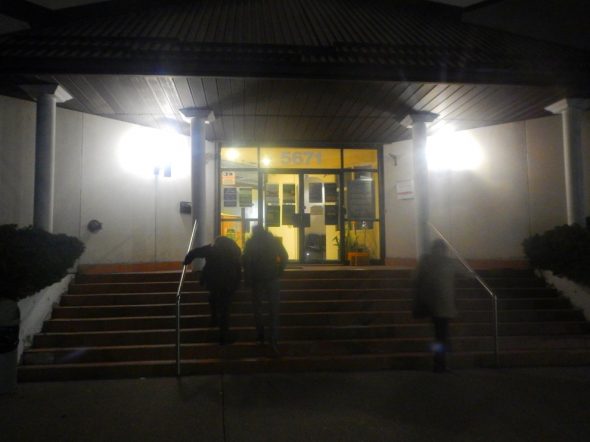
Category:
Share it:
Comments Off on Day 16 – VIDEO – Ramadan Potluck Iftar – SeekersGuidance Canada – 220 Britannia Road – Mississauga, Ontario
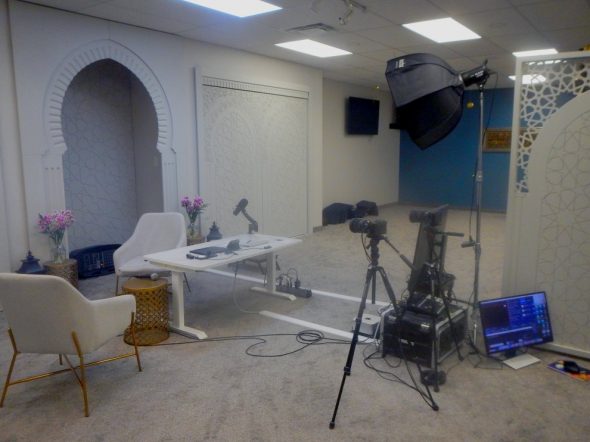
Category:
Tagged with:
Share it:
Comments Off on Day 16 – LIVESTREAM – The Resilient Hour – “Contemplating the Qur’an” – Shaikh AbdulWahab Saleem – Brother Farhad Khadim – IIT – Islamic Institute of Toronto
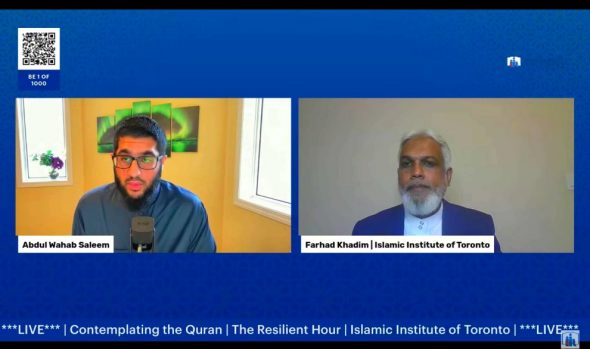
“Contemplating the Quran and how to live by Qur’anic Guidance
Shaikh AbdulWahab Saleem
The Resilient Hour from the Islamic Institute of Toronto“
Contemplating the Quran | Shaikh AbdulWahab Saleem | The Resilient Hour https://t.co/aCA4VDyGPV
— IIT (@IIT1630) March 27, 2024
Category:
Tagged with:
Share it:
Comments Off on Day 15 – VIDEO – Intimate Community Iftar with Mayor Patrick Brown and Council – Atrium – Brampton City Hall
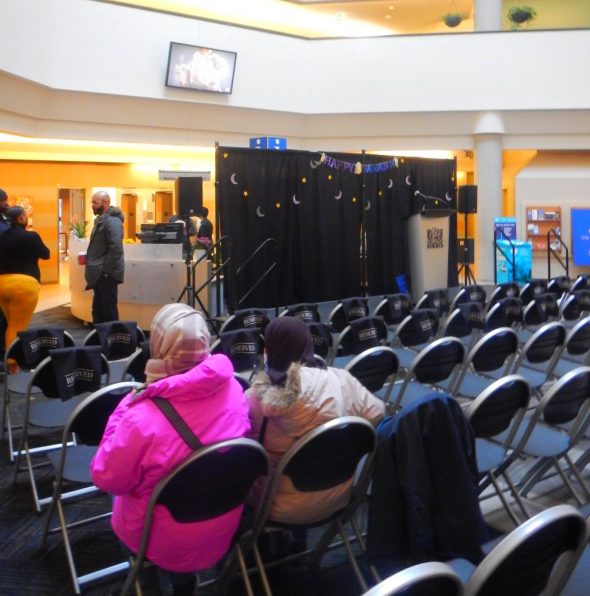
Category:
Share it:
Comments Off on 30 MORE | Guest Blog Post: Prayers were held for the first time in the new Ottawa Mosque on Friday March 26 1975 – 49 years ago today — By James Powell – Ottawa Historical Society
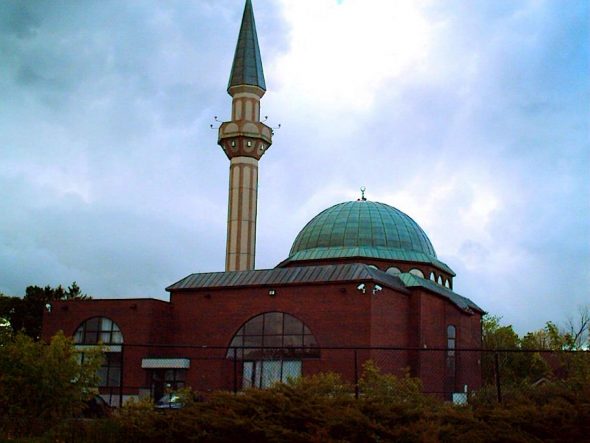
Ottawa’s First Mosque by James Powell from Today in Ottawa’s History
According to a 1995 Citizen article, the first Muslim immigrants to Ottawa were Hassan Mahmood Wahad and his family, who came to the capital in 1903 from the small Lebanese-Syrian town of Kfarmishki, located about 90 kilometres southeast of Beirut.
At the time, the community was part of the Ottoman Empire.
The Wahad family found a home in the Byward Market alongside other recent immigrants.
It must have been difficult.
Initially knowing little English or French, Hassan Wahad and his family were cut off from their language, culture, and religion.
Somehow, Hasan Wahad made a living as a pedlar, selling small items door to door.
Other Lebanese families from Kfarmishki, including the Boushey family who became well-known in the capital for their landmark grocery store on Elgin Street, later joined the Wahad family in Ottawa.
Hassan Wahad made it to the local newspapers in 1924, when he appeared as a witness in a bigamy case involving two other members of the small but growing Muslim community in the city.
Wahad gave evidence of marriage practices in Muslim Syrian communities.
(The bigamy case was dismissed for lack of evidence.)
Wahad’s second daughter, Afefe, was the first Muslim person born in Ottawa.
At school, Afefe became known as Eva.
This moniker stuck for the rest of her life.
Eva Wahad was to play a key role in the establishment of the first mosque in Ottawa.
It was years before Ottawa’s Muslim community was large enough to consider the possibility of building a mosque.
By the early 1960s, there were still less than five hundred Muslims living in the city.
Prayers at major religious festivals such as Eid-al-Fitr and Eid-al-Adza were held at the Pakistan High Commission and the Egyptian Embassy.
(Eid-al-Fitr marks the end of the month-long period of fasting of Ramadan. Eid-al-Adza, the Feast of Sacrifice, honours the willingness of Abraham to sacrifice his son Ismail [Peace be upon them] in an act of obedience to Allah.)
At the 1962 Eid-al-Fitr observance at the Pakistan High Commission, four Ottawa Muslims proposed the creation of an Ottawa Muslim Association (OMA) with the objective of building a mosque.
Three reasons were cited for its construction.
First, the mosque was to serve the religious needs of the growing Muslim population of Ottawa.
Second, it would help Muslim children stay connected with their heritage.
Third, the mosque would promote better understanding among peoples of different faiths.
The Muslim Women’s Auxiliary, which was founded by Eva Wahad, was tasked with the objective of raising money for the mosque’s construction fund.
In 1962, Ottawa’s Muslim community began to hold weekly prayers at the Western United Church located at the corner of Wellington and Bronson Streets.
When that building was demolished in 1965, the community’s services were moved to Northwestern United Church on Northwestern Avenue close to Scott Street.
Also in 1965, the OMA was officially incorporated.
For the next ten years, Ottawa’s Muslims scrimped and saved.
The Ottawa Muslim Association recommended that community members donate ten days’ salary each year to the building fund.
Eva Wahad organized hundreds of events to raise funds including cultural activities, teas, and even pork-free, Chinese cooking lessons.
Roughly half of the more than $500,000 ultimately needed to construct the mosque was provided by Muslim countries, including Saudi Arabia, Iraq, Iran and Malaysia.
By 1967, the Association had raised the $25,000 needed to purchase a plot of land beside the Northwestern United Church.
The spot was ideal.
It was serviced by three bus routes, was fairly central, and not too close to its neighbours.
On the land was two old houses.
One was rented out while the other was used for programs.
For many years, funerals and marriages had to be performed by an Iman brought from Detroit.
By the late 1960s, Dr. Farid R. Ahmed, a National Research Council physicist and the first OMA president, was able to able to perform these rites.
He later became chair of the mosque construction committee.
In 1972, the OMA announced that Ottawa would finally get its first mosque to be located on the Northwest Avenue property.
While all the funds necessary for construction the mosque had not yet to be donated, the organization was able to proceed with its plans.
The building, with a traditional Islamic dome and 115-foot minaret, was designed by Toronto architect Anwar Asad.
The call to prayers made five times a day would be delivered using an electronic amplifier.
The building would be oriented so that worshippers would facing east.
As is customary with all mosques, there would be no chairs or pews.
Prayers would be made kneeling on carpets.
Consistent will Islamic practice, men would pray in front, then boys, then women and girls.
City hall gave the go-ahead to build the mosque in early March 1973, but not before a few hiccups.
Plans for the site incorporated only twenty parking spaces instead of twenty-six as initially required by the city’s planning department.
After the Board of Adjustments approved a variance, the City appealed, concerned about crowding on neighbourhood streets.
However, the appeal failed since the relevant city by-law governing the required number of parking spots for a house of worship was based on the number of seats or pews, whereas a mosque had no seats or pews.
Mayor Benoit also noted that a shortfall of six parking spots would make no appreciable difference to neighbourhood congestion.
With this last hurdle passed, tenders were sent out.
Ground was broken at 251 Northwestern Avenue in September 1973.
Two young children, Basher Ghadban and Yasmine Ismaily, turned the first sod with G. K. Chaudhry, the then president of the OMA, and other members of the Muslim community looking on.
Eighteen months later, on 26 March 1975, prayers were held for the first time in the new Ottawa mosque.
While the upstairs dome and minaret were not yet complete, building inspectors had given their permission to use the basement.
In the inaugural congregation were ambassadors from Muslim and Arab countries.
That September, Eid-al-Fitr (marking the end of Ramadan) was celebrate for the first time in the mosque.
By now, evening and Sunday prayers (not Friday) had already started, with plans underway to commence weekend Islamic classes.
In late February 1976, with the upstairs building still unfinished, prayers in the basement were disrupted by protests at the visit of Pakistan’s then prime minister Zulfikar Ali Bhutto.
Bhutto, who was visiting Ottawa, had come to the mosque to pray and to pledge funds to the mosque’s building fund.
A Pakistani couple who had been separated from their children by the 1972 civil war that had led to the independence of Bangladesh interrupted prayers to present a petition to Bhutto asking for his intervention to bring their children to Canada.
Their earlier efforts to do so had been thwarted by death threats.
Mosque officials allowed the couple to present their petition to Bhutto.
However, a shouting match broke out afterwards between supporters of the couple and others in the hall.
Bhutto was whisked away by RCMP officers.
Two demonstrators were detained but subsequently released without charge.
The following year, Zulfikar Ali Bhutto was ousted in a military coup by General Muhammad Zia-ul-Haq, and was controversially executed in 1979.
After some minor last-minute finishing touches, including the installation of handrails, building inspectors gave the upstairs portion of the glass and steel mosque the green light at the end of February 1977.
Although ready for occupancy, its interior was empty.
There was not even a pulpit in place, as the one promised by Egypt had not yet arrived.
Nevertheless, on 3 March 1977, Ottawa’s Muslim community was able to celebrate Eid Milad-un-Nabi in honour of the birth and life of Mohammed [pbuh].
School children gave poetry recitals.
There were also prayers and a talk on the Prophet’s life [pbuh].
In early July 1977, Eva Wahab and the Ottawa Muslim Women’s Auxiliary hosted an “open house” at the mosque and tea to the people of Ottawa of all faiths.
Today, the Ottawa Mosque and the Ottawa Muslim Association remain central to the life of the capital’s Muslims.
However, the size of the Muslim community has grown rapidly since the opening of the mosque on Northwestern Avenue, augmented by new arrivals, most recently from war-torn Syria and Somalia.
With the number of Muslims now accounting for about 10 per cent of the population of Ottawa-Gatineau, or roughly 140,000 people, the Ottawa Mosque cannot accommodate them all at prayers.
Consequently, additional mosques have opened across the region.
Eva Wahad and Dr. Farid Ahmed, the two Muslim pioneers who led the movement to build the first mosque in Ottawa, died in 2005 and 2021, respectively.
Sources:
Durrani, Palvashah, 2014. First Muslim Born in Ottawa: Visionary & Community Builder Eva Wahab, Muslim Link, 3 October.
Khalfan, Zufl M., 2021. Farid Ahmed: A Pioneer Muslim Passes Away, 20 December.
Ottawa Citizen, 1962. “Moslem Group Plans to Have Ottawa Mosque,” 5 April.
——————, 1969. “Muslim women are cooking up a mosque,” 8 February.
——————, 1970. “Religion can still save a troubled world,” 23 July.
——————, 1972. “Malaysia donates $5,000 to Ottawa mosque project,” 4 March.
——————, 1973. ‘City’s 1st mosque plan gets all-clear,” 9 March.
——————, 1973. “Ottawa’s Muslims will get their mosque,” 9 June.
——————, 1975. “Moslems hold first prayers in new mosque,” 20 September.
——————, 1976. “Capital Diary,” 18 February.
——————, 1976. “Bhutto church visit disrupted,” 23 February.
——————, 1977, “Ottawa mosque nearly complete,” 5 February.
——————, 1977. “Moslems to mark their ‘Christmas.’” 22 February.
——————, 1977. “Open house,” 9 July.
Ottawa Journal, 1972. “City will hear call to Allah,” 2 June.
——————-, 1975. “Muslim pioneers build a future,” 17 May.
——————-, 1976. “Hard work built Mosque,” 9 December.
Ottawa Mosque, 2023. About OMA.
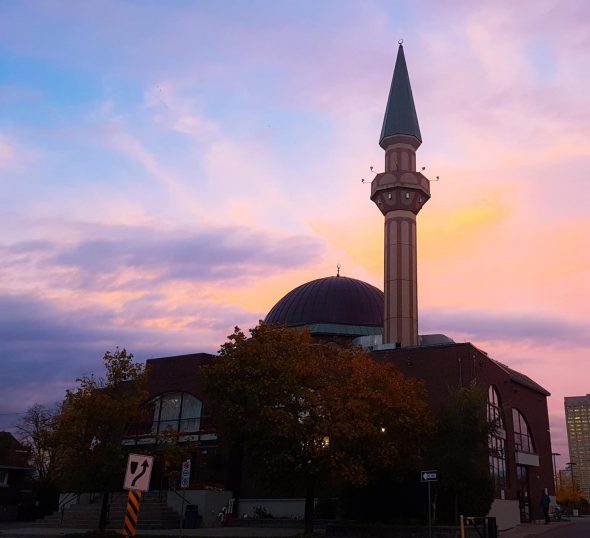
Category:
Tagged with:
Share it:
